Handkerchiefs were at once homely domestic objects and fashion accessories. They were intended for a life of hard work or decoration only – many were both. Thanks to the introduction of tissues from the mid-20th century, hankies are no longer part of every woman, man and child’s wardrobe, which is why I talk about them in the past tense, though I’m sure they are still regularly used by some.
I have a collection of 70-odd hankies, which I inherited after my Nan moved into a retirement village. I’d never studied them properly until I decided to write a blog post on them.
Most are linen, some are cotton. A small number are silk, chiffon or acetate. Many have simple embellishments, some are heavily decorated and others are very plain indeed. White and cream predominates. All have a light, beautiful, powdery scent which probably comes from a drawer liner.
They were all folded into small squares, which presented me with a dilemma – do I unfold them? This may sound silly, but for all I knew they had been like this for decades. Some were beautifully folded. I was loath to disturb them for this reason.
I decided to unfold most and keep some folded as examples (see above). I also carefully ironed them. I’m glad I did, because I would never have discovered that many of these hankies probably belonged not to my nan Betty, but to her mother Florence (Flossie). Both were middle-class homemakers.
I realised this when I found her name – F Madill – written in fountain pen on a simple linen hanky. This one was obviously for every day use but nevertheless not to be lost! A couple also have the letter F appliqued on them.
Drawn work is the most common embellishment on these hankies. This is when small holes are made close together and tied at the ends to keep the squares open. It’s very pretty, delicate work. Here are some examples.
Another group are decorated with netting borders. Like some of the more decorative drawn work hankies, these were for decoration or extremely light work only.
Another one not designed for a woman with a cold is this beautiful and delicate organza hanky. The camera has played havoc with it I’m afraid – the centre’s gone a bit haywire.
Some of the hankies are very plain, with no borders or just one line of drawn work around the edges. Most though have decorative borders, which lift them from the mundane.
Lest you think my womenfolk were wholly conservative, demure ladies who never strayed beyond tasteful white or cream, here are some patterned examples.
Many of the hankies are embroidered, mainly in white and cream threads. This one is a departure from this theme.
Some still have labels precariously affixed to them.
Like the items Fran wrote about in her last blog (https://gloryboxtextiles.wordpress.com/2010/10/06/a-quick-word-2/), hankies were often kept in special boxes or bags. This small organza hanky bag also came to me by Nan – I think it was probably Flossie’s. My camera doesn’t like organza!
Some women kept clean and dirty hankies in bags that looked like small shirts. There’s one in Rosemary McLeod’s book Thrift to fantasy. These typed labels were intended for these – I wonder if any got made? It’s very twee.
Many of these hankies were used but some were clearly not. Flossie’s English cousin Jessie Batson sent her a birthday card which reads ‘These were bought in Switzerland – just a small token to show I have not forgotten this landmark’. The landmark is Flossie’s birthday. A stiff linen drawn work hanky is folded inside the card. It has a label which reads ‘hand work’ and could well be Swiss. I wonder if she used one and kept the other in the card for sentimental reasons?
Another gifted hanky remains in its cellophane wrapper, complete with Christmas card. I don’t know who the giver Margaret was.
Men are not entirely absent from this collection. There’s a few large, stained cotton hankies embroidered with the letter B – that’s my poppa Bruce. One is still in it’s wrapper, forever pristine.
What shall I do with all these hankies? They sat folded in my linen drawer for a few years until now. Recently I considered piecing some together to create an apron, but after looking at them properly I realised I don’t want to re-purpose them. Hankies they were, hankies they will stay. I do know that I won’t be using them to wipe tears, snot or brows. I may however, tuck one in a pocket for decorative effect every now and then.

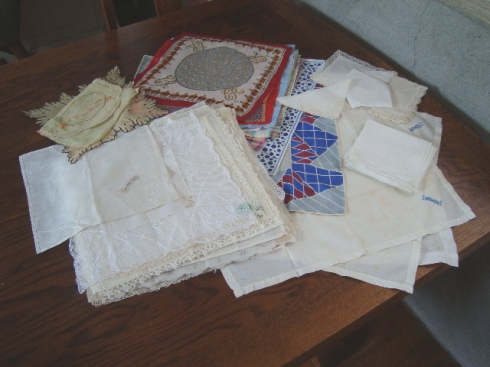

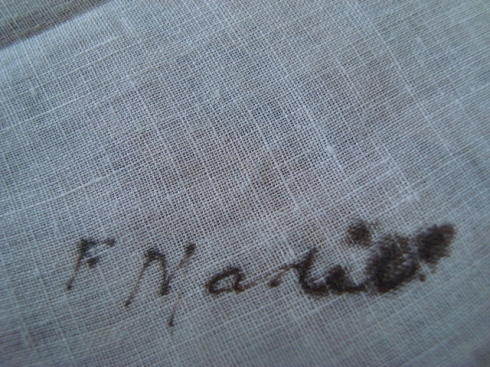




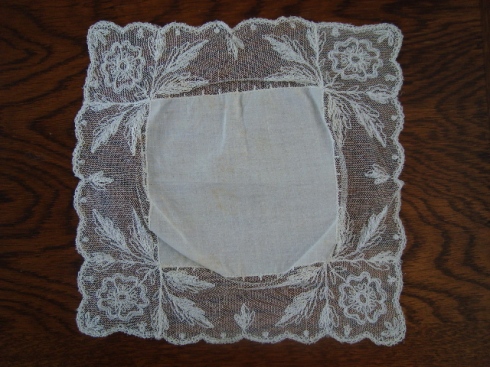

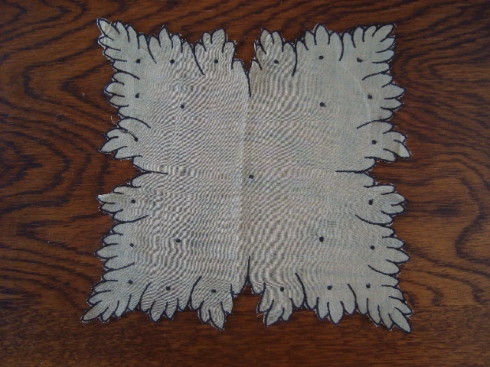



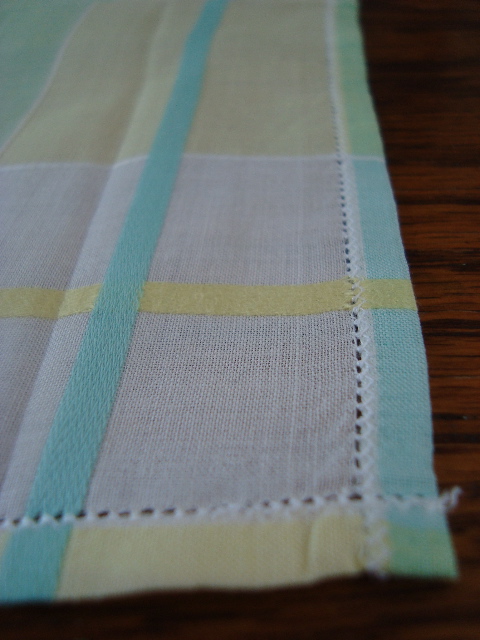
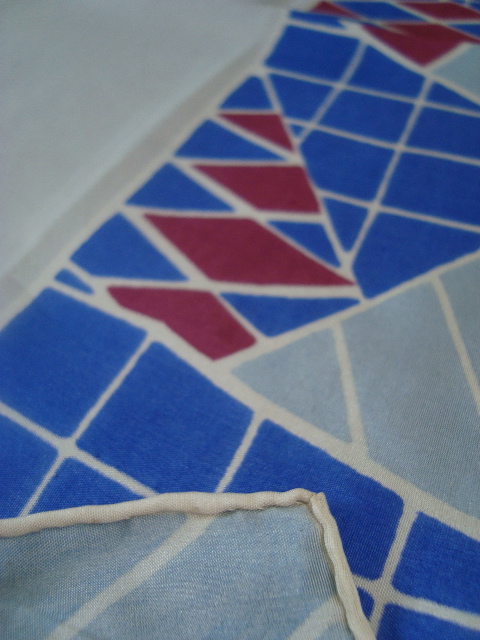
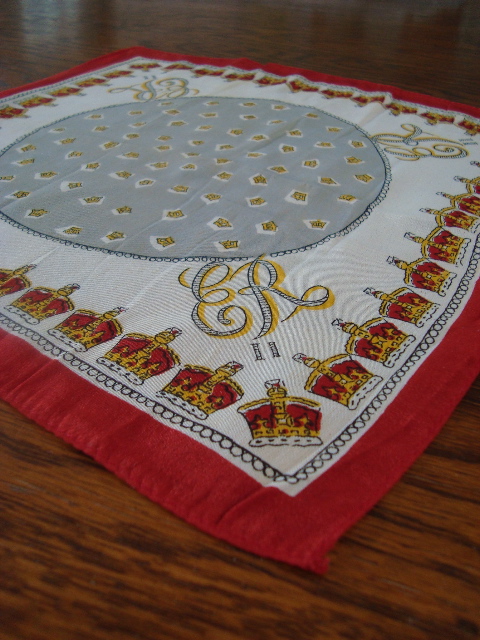



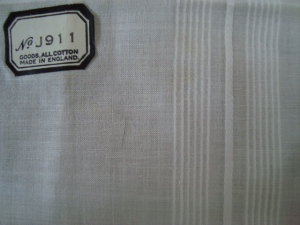
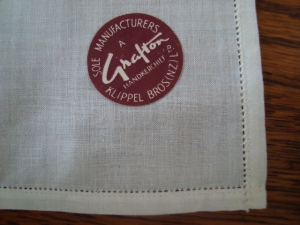
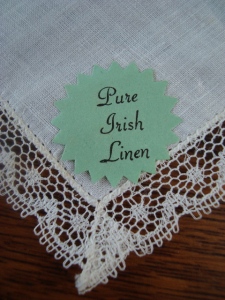






12 comments
Comments feed for this article
October 18, 2010 at 10:22 am
Caren
Hankies were a very common Christmas or birthday present in the 1960s and 70s when I was a child – huge checked ones for men, and boxed embroidered gift sets for women. Clearly tissues have taken their place entirely… presumably they are not terribly hygienic, and as a result there’s no attempt by greenies to revive them?
I have a lovely bunch of (70s?) souvenir hankies that I bought on TradeMe – someone’s grandmother’s collection.
October 18, 2010 at 10:47 am
Kerryn
I imagine hanky advocates have trouble with the hygiene argument. Having spent the winter helping my son blow his nose I appreciate the virtues of tissues.
I’d like to learn more about my hankies and when they may have been made. Most of them are a world away from Caren’s bright, cheerful collection. I guess I wish I knew more about Flossie and whether the hankies can tell me anything about her life and personality. My Nan is still alive but sadly not really in a position to tell me much. I’ve left it too late.
October 18, 2010 at 2:52 pm
Julie
I am a sneezer and I still use a hanky. I do have some nice hankys at home but mostly i use something that is not up to glory box standards – an old flannelette sheet ripped up, the same as we did we were young. These are a lot kinder on the nose than tissues and pass the greenie test. Better than rubbish bin full of used tissues! I grew up next door to a family of sneezers and nearly every day their mother would boil the hankies on the stove to sterilize them
October 18, 2010 at 7:15 pm
Kerryn Pollock
I hope Dad didn’t come home and mistake the bubbling brew for lunch….
I like the sound of your old sheet hankies – nice continuity of practice going on there!
October 19, 2010 at 12:16 pm
Fran
What a great collection! I’m always amazed about items that people tuck away and never use. Some of the details found on individual pieces are remarkable. No wonder your Nan was reluctant to use them.
October 20, 2010 at 9:25 am
Nancy Swarbrick
I too have a number of old hankies, but most are nowhere near as decorative as Kerryn’s collection (with the possible exception of a few my grandmother edged with tatting). I have discovered a very good use for them – I grow English lavender, and at the end of summer usually have quite a decent amount of dried lavender. I put a handful on an open hankie and tie it up in a bundle with thin satin ribbon. The resulting lavender bag can be placed among clothes in drawers and cupboards, and when it loses its scent the lavender can be easily thrown out and the hankie washed and reused.
October 20, 2010 at 9:48 am
Megan Cook
The quick and easy lavender sachet is a great idea. I’ve still got hankies, mainly men’s ones – big cotton squares – and use them for their original purpose when I’m gardening. A box of tissues is one thing too many to cart around (87 steps to the top garden) and I hate having snotty tissues blowing about.
October 20, 2010 at 12:18 pm
Sarah
I am inspired to get out a bag of lace my Mum paseed onto me from my Gran – thanks Kerryn.
October 20, 2010 at 3:42 pm
Kerryn Pollock
I too like your idea Nancy. I love lavender and have plans to plant a small hedge of it in my garden one day from which I will harvest.
And Sarah, I’ve also thought about making some hankies. I’ve done a few in the past but I now feel a project coming on….
April 19, 2011 at 10:41 pm
Rachel Boyce
Stumbled across your site looking for a 1950’s ceramicist called Kerryn from Melbourne. Pleased that i did. My grandmother – Muriel- had a lovely collection of handkerchiefs. They were very precious to her, as i think some were souvenirs from her husband’s tour of duty in WW2. When she had to be cared for in a home, they were some of the precious things that my mother helped her to pack. Unfortunately, another helper was very heavy- handed with a permanent marker, staining them indelibly with her messy handwriting. Mum was very sad about this. Now mum’s gone, i have the hankies. Still not sure what to do with them.
I do a lot of oppshopping & sometimes pick up printed kids hankies, intent on regifting them. A friend & i were contemplating other uses – and there it was, in Frankie… The ‘hankie blankie’.
Thanks for sharing them.
Rachel
April 20, 2011 at 1:21 pm
Kerryn Pollock
The fate of your grandmother’s hankies shows how undervalued textile objects are by most people. I feel outraged on your behalf Rachel, though I don’t suppose the person ‘meant’ to do it! I like the sound of the hankie blankie – if you ever make one perhaps you can share it with us on Glorybox.
December 21, 2011 at 7:40 am
Kerryn
I have just discovered that well-known NZ textile collector and historian Rosemary McLeod has a hanky collection. It’s written about in a publication which is worth seeking out – To have & to hold: making collectors by Philip Clarke (a small book based on a exhibition at Objectspace in Auckland in 2009).